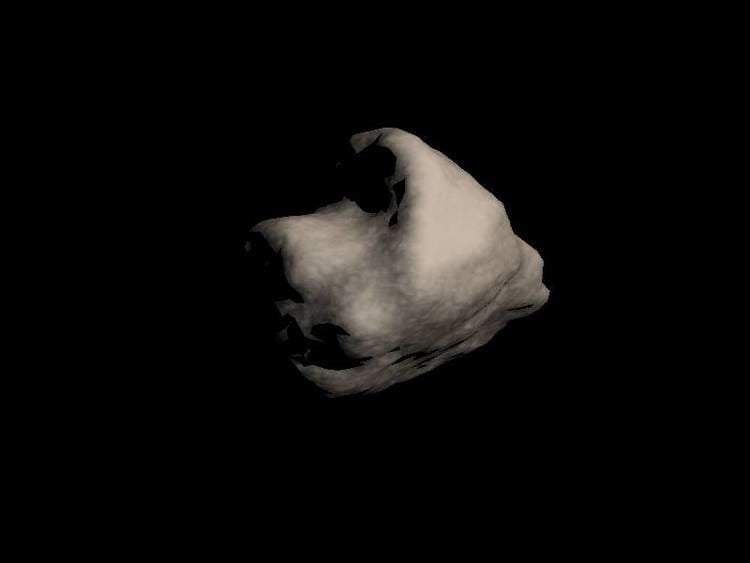Alternative names 1991 JX Orbital period 1,443 days Orbits Sun Discovery site Palomar Observatory | Discovery date 10 May 1991 Observation arc 8968 days (24.55 yr) Discovered 10 May 1991 Discoverer Eleanor F. Helin Asteroid group Alinda family | |
 | ||
Aphelion 4.021663 AU (601.6322 Gm) Similar 1620 Geographos, Sun, Solar System, 4769 Castalia, 1862 Apollo | ||
6489 golevka top 8 facts
6489 Golevka is an Apollo, Mars-crosser, and Alinda asteroid discovered in 1991 by Eleanor F. Helin.
Its name has a complicated origin. In 1995, Golevka was studied simultaneously by three radar observatories across the world: Goldstone in California, Yevpatoria RT-70 radio telescope in Ukraine (Yevpatoria is sometimes romanized as Evpatoria) and Kashima in Japan. 'Golevka' comes from the first few letters of each observatory's name; it was proposed by the discoverer following a suggestion by Alexander L. Zaitsev.
Golevka is a small object, measuring 0.6 × 1.4 km. The radar observations revealed that it has a very strange, angular shape that looks different depending on the direction. In 2003 the Yarkovsky effect was first observed at work by high-precision radar observations of Golevka. Between 1991 and 2003, the small force of the Yarkovsky Effect caused a shift of 15 kilometers (9.4 miles) from what would be expected based on only gravitational interactions. This helped evaluate the asteroid's bulk density (2.7 ± 0.5 g/cm³) and mass (2.10×1011 kg).
Golevka approaches Earth to 0.05 AU (7,500,000 km; 4,600,000 mi) in 2046, 0.10 AU in 2069, and 0.11 AU in 2092. On the other hand, Golevka's collision probability with any planet is negligible for at least the next nine centuries. Its orbit is strikingly similar to that of 4179 Toutatis in eccentricity, semi-major axis, and inclination. However, Toutatis is better known due to a close approach to Earth in 2004.
